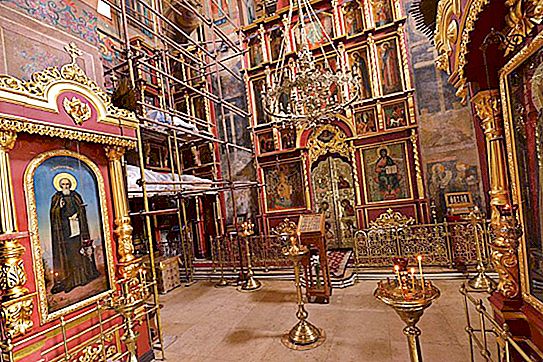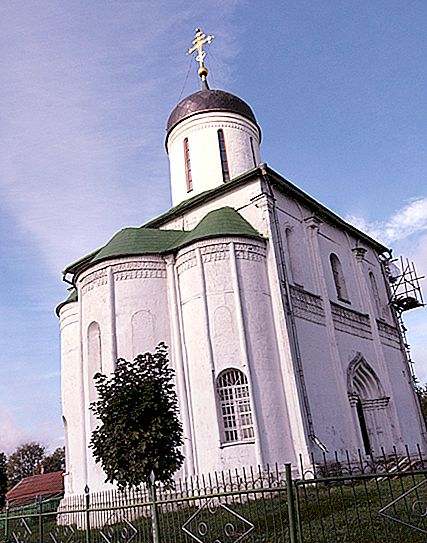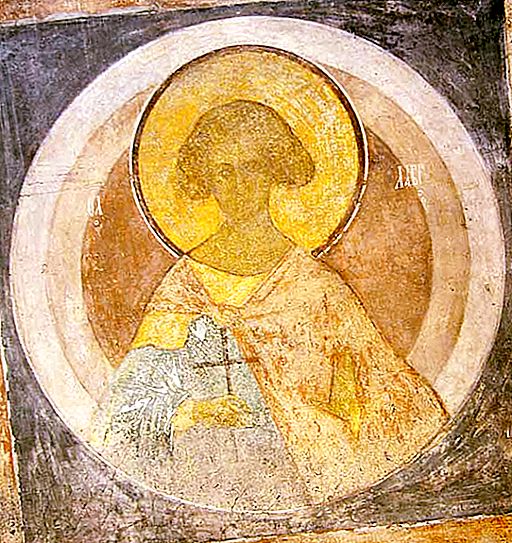The Assumption Cathedral on the Town in Zvenigorod is a four-pillar, single-domed church built of white stone during the period from the end of the 14th to the beginning of the 15th century. It is a monument of early Moscow architecture. Inside the church there are frescoes, the authorship of which is attributed to Andrei Rublev. This unique cathedral, the history of its construction, interior decoration and interesting facts will be discussed later in the article.

Cathedral History
The Assumption Cathedral in Zvenigorod (built in 1399) was erected on the territory of the fortress of Grand Duke Yuri Zvenigorod. To this day, preserved high bulk earthen ramparts surrounding the hill on which the city was erected.
The mention of Zvenigorod was first recorded in the letter of Prince Ivan Kalita from 1339, but archaeological research suggests that this fortified city existed here much earlier as an outpost guarding the Rostov-Suzdal Principality.
And the Assumption Cathedral in Zvenigorod was erected on the territory of the fortress, which guarded the city itself from numerous invaders. The construction of the temple was initiated by decree of Prince Yuri Dmitrievich, son of Dmitry Donskoy. To erect a church from Moscow, craftsmen were called up who, shortly before, had built the Church of the Nativity of the Virgin in the Seny (it is believed that the Cathedral of Our Lady was erected in honor of the victory in the Battle of Kulikovo).
Cathedral architecture
The Assumption Cathedral in Zvenigorod has a focus on the style of architecture inherent in the Vladimir-Suzdal principality, which was widespread at that time. Surprising and interesting is the fact that this cathedral is one of four temples that has been preserved in its original form. Moreover, this church was built the very first of all surviving.

The cathedral is not a very large four-pillar cross-shaped temple, which has a single-domed top. The side of the church, facing east, has three apses (lowered, semicircular ledges adjacent to the main building). The facades of the temple from the north and south are traditionally divided into three parts, which end with semicircular architectural elements - yards.
Facade of the cathedral
The facade of the Assumption Cathedral in Zvenigorod is made in the form of so-called shoulder blades (lysen, which do not have capitals and bases). The walls of the temple are decorated with elegant vertical rods. A beautiful floral ornament runs along the upper part of the facade, which separates the upper and lower parts of the building.

In the central facade parts of the cathedral there are promising portals adjacent to elongated windows. These architectural techniques were typical of most cathedrals of that time, however today the temple has changed somewhat due to repairs carried out in later times.
The cathedral was created on a sufficiently high basement (the so-called lower floor, the prototype of the foundation). Then the building narrows up, which visually gives it harmony and elegance. Due to the complex roofing structure, the cathedral acquired its visual peculiarity, not characteristic of the temples of that time.
It is worth noting that the internal and external support pillars do not correspond to each other, which was also not typical of most temple buildings of the XIV-XV centuries.
Frescoes of the cathedral
The Assumption Cathedral in Zvenigorod contains unique frescoes, some of which are attributed to the brush of Andrei Rublev himself. Unfortunately, the works have been preserved fragmentarily, nevertheless, the gamma of tones and the saturation of colors allow us to talk about the Rublev school.

The original fragments that were found inside the dome, on the pylons and one of the walls of the church, date back to the beginning of the 15th century. The frescoes in the dome depict forefathers and biblical prophets. The technique of execution is distinguished by the grandeur and dynamism of the figures, emphasized by transparent colors, as well as the airiness of the draperies.
In the Assumption Cathedral in Zvenigorod, the frescoes that are on the pylons are best preserved. They depict half-figures of martyrs and healers Lavra and Flora. There is also an image of an angel who grants a monastic rule to the Monk Pachomius. On a nearby pylon there is a fresco with the Monk Varlaam, conversing with his disciple Joasaph, who was converted to Christianity.




